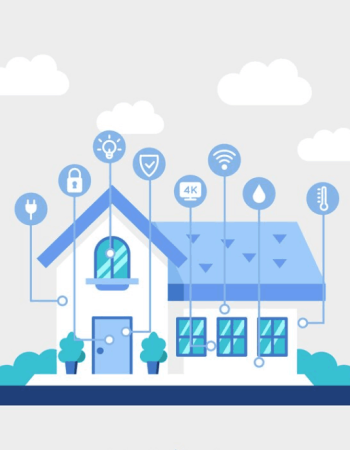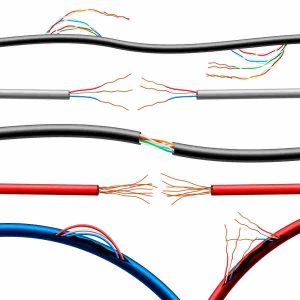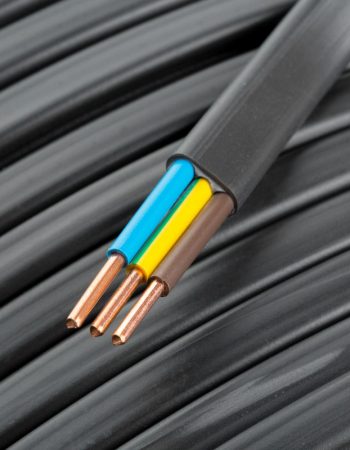The rise of smart homes has revolutionized the way we interact with our living spaces. From automated lighting and climate control to advanced security systems and entertainment setups, the integration of smart devices promises unparalleled convenience and efficiency. However, the backbone of any smart home is its network cabling infrastructure. In this blog, we will explore the latest trends and techniques in network cabling for smart homes, and why a robust network cabling solution is crucial for optimal performance.
The Importance of Network Cabling in Smart Homes
Smart home devices rely heavily on a stable and fast internet connection to communicate and function seamlessly. While wireless connectivity is convenient, it can often be unreliable and prone to interference, especially in larger homes with multiple devices. This is where network cabling installation becomes vital.
Benefits of Installing Network Cabling in Smart Homes
- Reliability: Wired connections provide a more stable and reliable connection compared to wireless, reducing the chances of signal drops and interference.
- Speed: Ethernet cables, such as Cat6 or Cat7, offer higher data transfer speeds, ensuring that your smart devices operate smoothly.
- Security: Wired networks are generally more secure than wireless networks, as they are less susceptible to hacking.
- Scalability: A well-planned network cabling infrastructure allows for easy expansion as you add more smart devices to your home.
Latest Trends in Network Cabling for Smart Homes
As smart home technology continues to evolve, so do the techniques and materials used in network cabling installation. Here are some of the latest trends:
1. Cat6 and Cat7 Cables
Cat6 and Cat7 cables are becoming the standard for network cabling in smart homes. These cables support higher bandwidths and faster data transfer rates, making them ideal for handling the increasing demands of smart home devices.
2. Fiber Optic Cables
For those looking for the ultimate in speed and reliability, fiber optic cables are an excellent choice. They offer virtually unlimited bandwidth and are immune to electromagnetic interference, ensuring the best performance for your smart home network.
3. Structured Cabling Systems
Structured cabling systems are gaining popularity as they provide a comprehensive and organized approach to network cabling. This system involves installing a series of standardized cables and components that can support multiple hardware uses, making it easier to manage and troubleshoot your network.
4. Power over Ethernet (PoE)
Power over Ethernet (PoE) technology allows network cables to carry electrical power, eliminating the need for separate power cables for devices such as security cameras and access points. This simplifies the installation process and reduces clutter.
5. Future-Proofing
With technology advancing rapidly, future-proofing your network cabling infrastructure is essential. This involves using the latest cables and techniques that can support higher speeds and more devices, ensuring your network remains relevant for years to come.
Read More: Why Network Cabling Installation is Essential for Your Business
Techniques for Effective Network Cabling Installation
A successful network cabling installation requires careful planning and execution. Here are some techniques to ensure your network cabling solution is effective:
1. Planning and Design
Before you start the installation, it is crucial to plan and design your network cabling infrastructure. Consider the layout of your home, the location of your smart devices, and potential future expansions. This will help you determine the best routes for your cables and the types of cables needed.
2. Cable Management
Proper cable management is essential for maintaining an organized and efficient network. Use cable ties, labels, and cable management trays to keep your cables tidy and easily identifiable. This not only improves the aesthetics but also makes troubleshooting and maintenance easier.
3. Testing and Certification
Once the installation is complete, it is important to test and certify your network cabling to ensure it meets the required standards. This involves using specialized testing equipment to check for issues such as signal loss and interference.
4. Professional Installation
While DIY installations can be tempting, hiring a professional for your network cabling installation can save you time and ensure a higher-quality result. Professionals have the experience and tools needed to handle complex installations and can provide valuable advice on optimizing your network.
Conclusion
In the era of smart homes, a robust network cabling infrastructure is essential for ensuring your devices operate efficiently and reliably. By staying up-to-date with the latest trends and employing effective installation techniques, you can create a network cabling solution that supports your smart home needs now and in the future. Whether you are upgrading an existing home or building a new one, investing in high-quality data cabling installation is a decision that will pay off in the long run.





